
Once, when I visited my brother, who lives in a small Texas town, he took me down a winding road to a turn-of-the-20th-century cemetery in a forest clearing. There, we found three tall tombstones in the shape of tree trunks, each stamped with an insignia reading “Woodmen of the World.” What were these strange things?
 When I got home, I dug into the mystery of these stone stumps, discovering the profoundly insecure time before Americans had Social Security, when anxieties about death and finances ran deep in the American psyche. In response to these fears, the Woodmen of the World order and its progenitor and competitor, the Modern Woodmen of America, made life insurance approachable and fun by packaging it in the familiar fraternal-order culture of the day. The two Woodmen societies succeeded in selling fraternal insurance where others failed, thanks to their innovations, which included offering distinct tombstones, flaunting ax-twirling pageantry, and holding clandestine rituals that involved slapstick pranks and mechanical goat rides. Today, both organizations still exist as insurance companies, but they’ve shed the fraternal antics. It’s hard to imagine their previous incarnations, which resembled a combination of LinkedIn, GoFundMe, and Jackass.
When I got home, I dug into the mystery of these stone stumps, discovering the profoundly insecure time before Americans had Social Security, when anxieties about death and finances ran deep in the American psyche. In response to these fears, the Woodmen of the World order and its progenitor and competitor, the Modern Woodmen of America, made life insurance approachable and fun by packaging it in the familiar fraternal-order culture of the day. The two Woodmen societies succeeded in selling fraternal insurance where others failed, thanks to their innovations, which included offering distinct tombstones, flaunting ax-twirling pageantry, and holding clandestine rituals that involved slapstick pranks and mechanical goat rides. Today, both organizations still exist as insurance companies, but they’ve shed the fraternal antics. It’s hard to imagine their previous incarnations, which resembled a combination of LinkedIn, GoFundMe, and Jackass.
Death was everywhere in 19th-century America: Fatal injuries, disease epidemics, and the Civil War made families acutely aware of mortality. For women and children, the death of a husband and father could tumble them into poverty. Only the wealthiest Americans bought private life insurance. Women were not allowed to take out policies on their husbands, and if the husband bought the policy on himself, the money wouldn’t be protected from creditors.

Top: A Woodmen of the World tombstone for Ben Strickland who died in 1917, found in a country graveyard outside Greenville, Texas. (Photo by Lisa Hix) Above: Members of the Modern Woodmen of America with their axes. (Courtesy of the Phoenixmasonry Museum)
And then, grieving families faced another layer of shame. In 19th-century America, taking charity was seen as a sign of weakness: The thinking was, if a lack of industriousness made you destitute, well, then you got what you deserved.
The middle and working classes did, however, have a workaround. Men could join secretive boy’s clubs like the Freemasons and Oddfellows that provided networking, entertainment, and a moral education. If a man proved himself to be hardworking and of good character through his initiation trials, his social standing meant his family could quietly receive financial support from the lodge without the stigma of accepting charity.
After the devastating Civil War, well-established fraternal orders began to formalize their benefits into insurance subsidiaries. New secret societies known as “mutual beneficiary societies,” created with the explicit purpose of offering life insurance policies, sprang up around the United States. Largely excluded from the original fraternal orders, women and African Americans even launched their own aid societies. Still, to join any fraternal order and receive its insurance benefits you had to prove that you were no slouch—a hard worker with high morals such as thrift, self-reliance, discipline, and generosity.

The 1930 DeMoulin Bros. & Co. catalog details the Ferris Wheel Coaster Goat: “About the time the candidate has relaxed and has kidded himself into believing he is to enjoy a smooth ride—over he goes right on his head. The firing of a blank cartridge adds to the consternation.” (Courtesy of the Phoenixmasonry Museum)
But it wasn’t all about restraint. Before the days of TV, radio, or fantasy football, fraternal lodges offered plays, rituals, and camaraderie and allowed men to let loose, which kept members coming back for more. The clout of being an insider and the endless pursuit of mystical, esoteric knowledge ensured that men would make their insurance payments for decades to come. The payouts were between $1,000 and $2,000, a lot of money at the time.
The Woodmen came late to the party—incorporating in 1883 as the Modern Woodmen of America—but their leaders’ entrepreneurial innovations breathed new life into the fraternal insurance game. Founder Joseph Cullen Root, a businessman in Lyons, Iowa, seized the opportunity to create his own fraternal order when the mutual aid society Knights of Honor, which almost went under because of the 1878 Yellow Fever epidemic, was selling its local lodge.
To avoid the financial pitfall that wrecked the Knights, Root made fitness a requirement to join his order, recruiting rural young men from the “healthiest states,” which meant those outside industrial New England. In the Woodmen, he fused Christian philosophy and pioneer values with ancient agricultural rites. “At that time, Root’s thought was that a cleared conscience and a cleared forest were synonymous,” says Bruce Lee Webb, who co-authored the 2015 book, As Above, So Below: Art of the American Fraternal Society with Lynne Adele, published by the University of Texas Press. “The axe is an instrument that clears the forest but is also useful for constructing buildings and making progress.”

The members of Woodmen of the World lodge posing with their axes and their goat mascot. (Courtesy of the Phoenixmasonry Museum)
Wielding aluminum-headed axes, members of Modern Woodmen lodges formed marching units known as the Foresters that performed precision drill routines in military-like uniforms. Eventually, there were roughly 10,000 drill teams nationwide. Dave Lettelier, curator of the Phoenixmasonry Masonic Museum and Library in Havana, Florida, says that such pageantry appealed to young men who’d grown up in awe of Civil War heroes. The fraternal beneficiary societies made signing up for insurance seem glamorous.
“When an initiate had to ‘ride the goat,’ everybody else would sit around the lodge room and have a big belly laugh.”
After an internal dispute with the other Modern Woodmen of America leaders, Root left the organization in 1890 and moved to Omaha to form a nearly identical “speculative woodcraft” order: the Woodmen of the World. One of his innovations was to provide free tombstones—Root believed passionately that no member of his order should be buried in an unmarked grave. So for 10 years, the Woodmen gave its members grave markers in the shape of tree stumps, inspired by the Victorian Rustic movement. (For another two decades, the members put down $100 apiece to reserve theirs.)
At a Woodman’s funeral, his personalized tombstone would be revealed in an elaborate ritual. The 4- or 5-foot-tall tree stump would be marked with the motto “Dum Tacet Clamet” (“Though Silent, He Speaks”) and rest on a stack of logs, each log symbolizing one of the deceased’s children. The local stone carver, who might alter the pattern, would add embellishments reflecting the Woodman’s personality, such as axes and doves.

A Modern Woodmen of American parade banner, circa 1900. (Courtesy of the Webb Collection/University of Texas Press)
The Woodmen tweaked another feature of the fraternal orders, most of which had solemn initiation rituals, loosely based on old Masonic ceremonies that symbolically forced recruits to confront their own mortality. Most societies had some macabre obstacle courses that ended with the young man facing a human skeleton lit by candles. According to As Above, So Below, in an early Woodmen of the World initiation, the blindfolded candidate wore weights symbolizing the “selfishness,” “hatred,” and “prejudice” he had to shed as he navigated a “dangerous path,” which involved wood boards on rollers, before he was allowed to see “the light of Woodcraft.”
The Modern Woodmen took such rites to new levels. They’d challenge recruits to put their hands in (fake) molten lead. Others were subjected to spanking machines and collapsing chairs. The Ferris Wheel Coaster Goat, patented and sold by a company co-owned by Modern Woodman member Ed DeMoulin, would flip the unsuspecting rider upside down and fire blanks from its rear.
What did a slapstick goat gag have to do with selling insurance? Everything. Besides reminding recruits that death was always at the door, the Woodmen “had to come up with all kinds of gimmicks to get people to join,” Lettelier explained. “When an initiate had to ‘ride the goat,’ everybody else would sit around the lodge room and have a big belly laugh. … If you ‘rode the goat,’ then you were in with the clique. Then that new member would bring in his buddies so the Woodmen could prank them. What it did was help build their insurance company.”
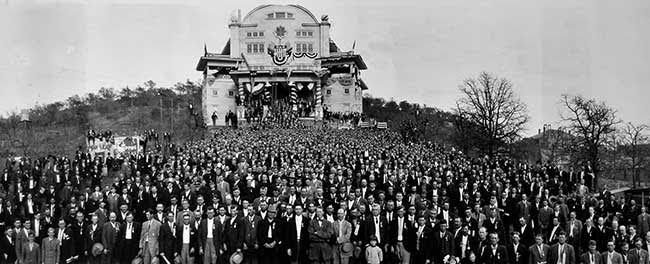
A Woodmen of the World gathering in 1911 in Mineral Wells, Texas. (Courtesy of the Webb Collection/University of Texas Press)
Thanks to pranks like these—soon adopted by other societies—fraternal-order membership reached its peak or “golden age” in the United States between 1890 and 1930, with as many as one-third of American men belonging to at least one secret society. While that’s impressive, it still means about two-thirds of American families did without such a safety net.
The Great Depression killed the fraternal insurance business in two ways. First, many men were unable to make their payments. Secondly, FDR’s New Deal created Social Security in 1935, filling the need aid societies once met. Radio, movies, and TV supplied the entertainment that the orders once provided. Woodmen of the World embraced these new media in Omaha, establishing a radio channel and a TV station—which launched the career of a local comedian named Johnny Carson—before both were sold to Meredith Corporation in 1958.
Today, the Woodmen groups have become all-inclusive not-for-profit insurance companies: WoodmenLife in Omaha and Modern Woodmen Fraternal Financial in Rock Island, Illinois. Unlike for-profit insurance companies, they put profits back into their members’ communities with programs for senior citizens, people with disabilities, and orphans.
“We still have an active Woodmen of the World lodge here in Waxahachie, Texas,” Webb says. “I’ve talked to them, and they said that they no longer do the different degrees. They meet once a month for a little banquet where they discuss their insurance premiums.” The goats, the costumes, and the rituals are long gone.

A detail from a 1917 Woodmen of the World beneficiary certificate. Click on the image to see a larger version. (Courtesy of the Phoenixmasonry Museum)
(Lisa Hix is the Associate Editor at Collectors Weekly. This story was written for What It Means to Be American, a project of the Smithsonian and Zócalo Public Square. It was originally published on March 22, 2016. Primary editor: Lisa Margonelli. Secondary editor: Jia-Rui Cook. To learn more about the Woodmen and other fraternal beneficiary societies, pick up the book “As Above, So Below: Art of the American Fraternal Society, 1850-1930” by Lynne Adele and Bruce Lee Webb or visit the Phoenixmasonry Masonic Museum and Library online.)

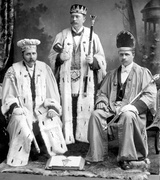
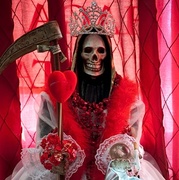 Learning to Love Death: New Museum Takes a Walk on the Shadow Side
Learning to Love Death: New Museum Takes a Walk on the Shadow Side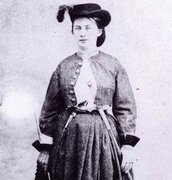
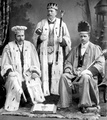 Decoding Secret Societies: What Are All Those Old Boys' Clubs Hiding?
Decoding Secret Societies: What Are All Those Old Boys' Clubs Hiding?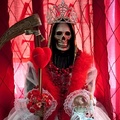 Learning to Love Death: New Museum Takes a Walk on the Shadow Side
Learning to Love Death: New Museum Takes a Walk on the Shadow Side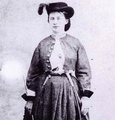 Female Spies and Gender-Bending Soldiers Changed the Course of the Civil War
Female Spies and Gender-Bending Soldiers Changed the Course of the Civil War Axes and HatchetsPerhaps no tools are more closely linked to the founding of America than th…
Axes and HatchetsPerhaps no tools are more closely linked to the founding of America than th… Fraternal MedalsFraternal medals, which are common in the United States but less so in Euro…
Fraternal MedalsFraternal medals, which are common in the United States but less so in Euro… Fraternal PinsFraternal orders were an integral part of American culture, even before mem…
Fraternal PinsFraternal orders were an integral part of American culture, even before mem… Mari Tepper: Laying it on the Line
Mari Tepper: Laying it on the Line Nice Ice: Valerie Hammond on the Genteel Charm of Vintage Canadian Costume Jewelry
Nice Ice: Valerie Hammond on the Genteel Charm of Vintage Canadian Costume Jewelry How Jim Heimann Got Crazy for California Architecture
How Jim Heimann Got Crazy for California Architecture Modernist Man: Jock Peters May Be the Most Influential Architect You've Never Heard Of
Modernist Man: Jock Peters May Be the Most Influential Architect You've Never Heard Of Meet Cute: Were Kokeshi Dolls the Models for Hello Kitty, Pokemon, and Be@rbrick?
Meet Cute: Were Kokeshi Dolls the Models for Hello Kitty, Pokemon, and Be@rbrick? When the King of Comedy Posters Set His Surreal Sights on the World of Rock 'n' Roll
When the King of Comedy Posters Set His Surreal Sights on the World of Rock 'n' Roll How One Artist Makes New Art From Old Coloring Books and Found Photos
How One Artist Makes New Art From Old Coloring Books and Found Photos Say Cheese! How Bad Photography Has Changed Our Definition of Good Pictures
Say Cheese! How Bad Photography Has Changed Our Definition of Good Pictures Middle Earthenware: One Family's Quest to Reclaim Its Place in British Pottery History
Middle Earthenware: One Family's Quest to Reclaim Its Place in British Pottery History Fancy Fowl: How an Evil Sea Captain and a Beloved Queen Made the World Crave KFC
Fancy Fowl: How an Evil Sea Captain and a Beloved Queen Made the World Crave KFC
Unfortunately, your article ignores one of the largest categories of fraternals: ethnic fraternal societies.
I saw some of these “tree trunk grave stones” in suburban cemetaries near Chicago. “As above, so below”.
Lisa, really enjoyed your article in todays DMN titled Insurance wrapped in rituals. My grandfather who died way before I was born was a Woodsmen of America. It took a lot of traveling, emails and library’s before I was able to locate his burial place. Finally found it in the old Crandall cemetery. When I visited it and located his grave I was amazed and startled to see the carved tree tombstone on his and my grandmothers grave. It was quite beautiful as far as tombstones go. I took pictures and sent them to my brother who was ecstatic to know where our grandparents were buried. My dad didn’t even know because his parents died when he was barely 7. My grandfather bought a plot and the guardians of the cemetery said I, as his grandson could be buried there at no cost and so that I plan to do. Your article enlightened me more about the Woodsmen of America and I enjoyed even more since it pertained to my grandfather.
Ronnie Smith
Garland, Tx
I have a Woodmen of the World plate that was my father’s that dates back to at least the early 1950s. It has a colored design on the front of a red tree stump with a dove flying over it. On the back it says: “Sanders Mfg. Co., Nashville, Tenn., USA, Woodman of the World, First Edition, Warranted, 23 K Gold.” I would like to find out what it is worth.
You can see over 20 original DeMoulin made lodge initiation devices at the DeMoulin Museum in Greenville, Illinois. You can also visit us at http://www.demoulinmuseum.org
Ferris Wheel Coaster Goat.
FERRIS WHEEL COASTER GOAT!
Please, GOD, somebody make this a thing again.
neat article! i myself have attended dinners in the early 80’s of Modern Woodmen of America given by an associate insurance salesman friend of mine.
Found a sword at my husbands parents when they passed that belonged to he is grandfather. Had no idea what the markings were on it, and for years it has sat around our house. Finally did a Google search and found our it was a Modern Woodman of the World sword from reading your article. Very interesting since we live in Moline, IL near the Modern Woodman headquarters in Rock Island, IL. Don’t know if my husbands grandfather was a member, or exactly where it came from, but now we at least know what it is. Not sure what to do with it, but for now it is out our of bedroom closet where it has been for years. Found the article very interesting. Thank you.
I can send “tombstone tree” pictures if,anyone is interested.
Lisa I really enjoyed your article I came across my grandfathers large tombstone tree—1927 and looked up Woodmen of the World I had heard my mother mention it few times as a child but did not know anything about it. Thank you so much for bringing me a piece of family history.
Thank you for your collection and explanation